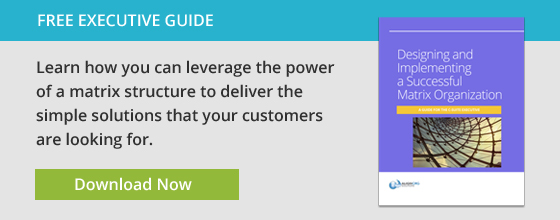In the book, Mastering the Cube, we argue that executives must become alignment leaders to create healthy organizations and facilitate change transformations. While this is very important for every organization, it can be difficult to know where to start and the path to follow to successfully lead your organization as a true alignment leader. To help leaders as they usher their organization through a transformation and fill the alignment leader role, it is helpful to have a trusted change partner to act as a guide, advisor, and sounding board along the way.
But, what makes a good change partner? How can you select one? And, what can you expect a good change partner to do to improve your organization design and transformation efforts and outcomes?
In our experience, there are five things that every good change partner must do:
Come equipped with questions. A good change partner doesn’t need to come with all the ready-made answers, structures, best practices, etc. Instead, a good change partner comes with good questions that challenge collective thinking and help generate insights about how things can be done differently. In many ways, a change partner with insight-producing questions becomes a catalyst for change, helping leaders and teams arrive at market-altering ideas and the best organization decisions.
There are many change partners that have data, offer solutions, and provide suggestions on industry best practices. While these things are important, they cannot compensate for a change partner that asks the right questions at the right time to help leaders and teams discover the optimal strategic choices and ways to align the organization for success.
Bring a bag of tools. In a previous blog, we explored how helpful tools can help facilitate the high-stakes conversations that are necessary for true transformation and alignment. Additionally, good tools are also a vital resource to move thinking forward and help inspire change.
Unlike some aspects of business planning and organization design, the kinds of tools that help move critical thinking forward rarely make it onto a spreadsheet or come in the form of a template to fill out or a formula to calculate. Instead, these tools act as a framework to align thinking and facilitate critical conversations.
Stay actively involved. Some change partners are great initiators of change or can help teams drive through the implications of change once a team figures out a strategy and organization design. However, great change partners facilitate change from inception to implementation—they know how to get conversations and ideas started; they get and keep key stakeholders engaged; they participate throughout the process as a voice of reason to keep the team grounded, focused, and honest to their intent; and they know how to mobilize the business from the moment a team settles on a decision to implementation and action.
In this way, a good change partner can see the change process from start to end and can anticipate the requirements and potential roadblocks before they become issues.
Are effective communication planners. A good change partner does more than just communicate a message clearly. Rather, she knows what kind of communication is necessary for each situation. For example, there are times when a change partner needs to take the stage and deliver the message. Other times she needs to coach a leader through the appropriate communication or work behind the scenes and deftly navigate the organization and partner with multiple stakeholders to get the message across.
The most critical thing, however, is finding a change partner that can not only do all types of communication, but also knows when each method is the best move for the organization.
Accentuates the change team/leaders. In many ways, a good change partner is one who is willing to get their hands dirty and expect little credit for their efforts. These kinds of change partners work tirelessly behind the scenes to help the change progress flourish, and ultimately be successful. AND, when the change is successful, they don’t expect or allow the limelight to shine on them personally.
In many ways, the change partner is much like a pit crew of a race team: they can enable the leader and her team to win. Their job is to make the driver (who lives in the limelight and is the face to the crowds) successful. Similarly, a great change partner gets things done and helps the leader score a win in the marketplace.
The ultimate success of a change partner is not accolades or praise. A change partner knows they have found the winning formula when an executive seeks them out the next time they need to undergo a significant change transformation. Alignment leaders understand the value of change partners in helping their organization ultimately achieve organization transformation and alignment success. It may not be a glamorous, limelight filled job, but it provides crucial support, services, insights, and abilities that can make or break a change transformation.






